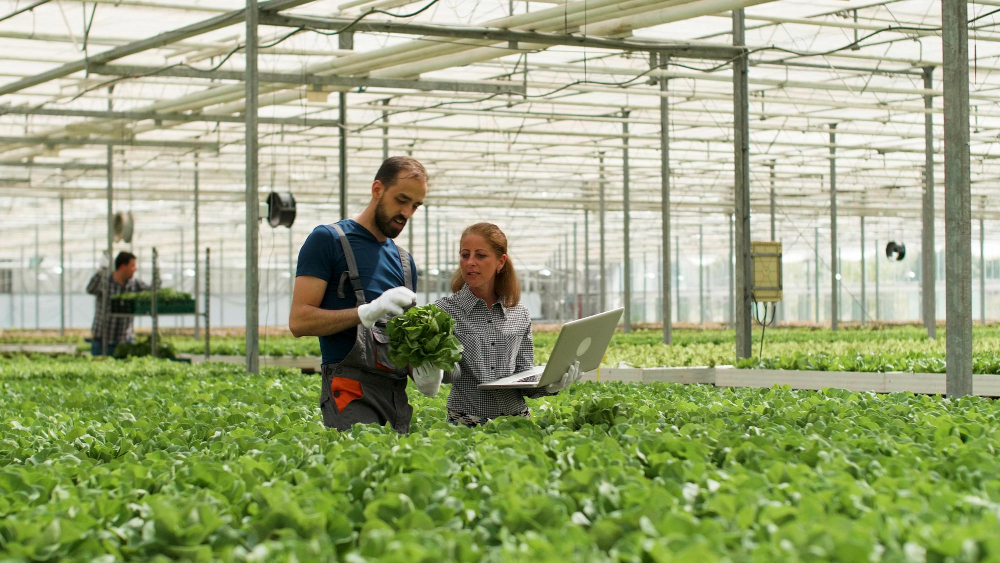As the world rapidly urbanizes, the need for sustainable and self-sufficient food systems becomes more urgent than ever. With increasing pressure on rural farmlands, food supply chains, and natural resources, cities must rethink how food is produced and consumed. This is where urban agriculture, powered by smart farming and IoT (Internet of Things), plays a crucial role.
At the forefront of this modern green movement is Ponic Greens, a Gurugram-based brand specializing in hydroponic and aquaponic systems, dedicated to making urban farming accessible, tech-driven, and educational.
What Is Smart Farming?
Smart farming, also known as precision agriculture, is the use of technology, data analytics, and automation to optimize the growth of crops. This approach uses IoT-based tools like sensors, controllers, and real-time monitoring systems to track and adjust conditions such as light, humidity, pH levels, nutrient concentration, and water usage.
In the context of urban farming, where space, time, and resources are limited, smart farming ensures maximum yield with minimum input, making it a perfect fit for city dwellers.
Urban Agriculture – The Need of the Hour
In a typical Indian urban setting like Gurugram, families live in apartments or compact homes with limited outdoor space. Traditional farming is nearly impossible. Yet, urban populations increasingly crave fresh, pesticide-free, and locally grown food. Smart urban agriculture—especially using hydroponic (soil-less) and aquaponic (fish and plant co-culture) systems—answers this need effectively.
With Ponic Greens’ solutions, residents can now grow fresh greens, herbs, fruits, and vegetables right at home—on their balconies, rooftops, or even indoors.
How IoT Elevates Urban Farming
One of the most powerful components of Ponic Greens’ hydroponic and aquaponic systems is the integration of IoT—the Internet of Things. Here’s how it transforms the experience:
1. Real-Time Monitoring
Sensors installed in the system continuously measure temperature, humidity, water levels, pH, and nutrient concentrations. This helps ensure the plants receive optimal conditions for healthy growth.
2. Mobile App & Remote Access
Users can monitor and control their systems through mobile applications. Whether you're at home, in the office, or on vacation, you can adjust the settings and check the status of your crops remotely.
3. Data-Driven Insights
Historical data and analytics help users make informed decisions about planting cycles, crop health, and system improvements, leading to better results over time.
4. Automated Alerts
If nutrient levels drop or the temperature spikes, the system sends instant notifications. This helps prevent damage and ensures crops remain in ideal conditions.
5. Automation & Scheduling
Lighting, water circulation, and nutrient dosing can be scheduled automatically—saving time, effort, and eliminating human error.
Together, these technologies make farming smarter, easier, and more efficient for urban families, schools, and institutions.
Education Through Urban Farming
One of Ponic Greens’ most unique offerings is their training and educational workshops for schools and colleges. Urban farming isn’t just about growing food—it’s a brilliant platform for teaching science, sustainability, and responsibility.
Students learn core concepts in:
- Biology (plant growth, nutrition)
- Chemistry (nutrient solutions, pH balancing)
- Physics (light, temperature)
- Environmental science (water conservation, carbon footprint)
By setting up hydroponic labs and urban farms in educational institutions, Ponic Greens fosters eco-awareness, innovation, and problem-solving among students. It's not just farming—it's future-focused learning.
A Step Toward a Greener, Healthier Future
The benefits of smart urban farming are far-reaching:
- Reduced food miles: Grow what you eat, right at home.
- Water efficiency: Hydroponics uses up to 90% less water than traditional farming.
- No harmful pesticides: Eat chemical-free, nutrient-rich produce.
- Saves space: Ideal for compact city homes.
- Year-round harvest: With controlled environments, seasonal limits don’t apply.
In a world where climate change, food insecurity, and pollution are daily concerns, adopting smart farming isn’t just trendy—it’s essential.
Why Choose Ponic Greens?
Based in Gurugram, Ponic Greens offers end-to-end support for hydroponic and aquaponic farming:
- Custom-built systems for homes, schools, and businesses
- IoT-enabled smart technology
- Training & workshops for individuals and institutions
- Ongoing maintenance and expert consultation
- Affordable solutions designed for urban lifestyles
With a mission to create self-sustaining green spaces in every home, Ponic Greens is not just selling systems—they're cultivating a movement.
Final Thoughts
Smart farming for smart cities isn’t a futuristic idea—it’s a growing reality, especially in tech-forward and environmentally conscious cities like Gurugram. Whether you’re a family wanting cleaner food, a school looking for STEM learning models, or a wellness business focusing on sustainability, urban agriculture with IoT integration is a game-changer.
And with Ponic Greens by your side, your journey from concrete to green is smarter, cleaner, and fully supported.

